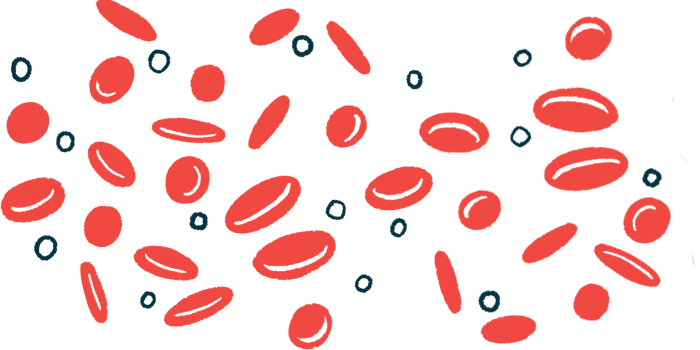With Long-term Enjaymo, Benefits May Last After Treatment Ends
2 of 3 women with CAD showed no symptoms for 1 year after stopping therapy
Written by |

Cold agglutinin disease (CAD) patients who take Enjaymo (sutimlimab-jome) long term may continue to experience disease remission after treatment discontinuation, according to a small study of three female patients.
Two of the three women — all treated with Enjaymo for at least three years — showed no symptoms, or signs of red blood cell destruction, up to one year after stopping treatment.
These findings support Enjaymo as a potential “viable alternative for long-term therapy of CAD,” the researchers wrote.
The study, “Sustained hematologic remission after discontinuation of sutimlimab treatment in patients with cold agglutinin disease,” was published in the journal Blood Advances.
Following patients post-treatment
Autoimmune hemolytic anemia (AIHA) is a group of rare autoimmune diseases in which the immune system produces abnormal antibodies, called autoantibodies, against red blood cells, leading to their destruction — a process known as hemolysis.
The disorder can be classified as CAD, warm AIHA, and mixed AIHA, depending on whether these autoantibodies bind more easily to red blood cells at lower temperatures (IgM autoantibodies) or higher temperatures (IgG autoantibodies). The mixed type has both forms of antibodies.
Enjaymo, marketed by Sanofi, was approved in the U.S. earlier this year as the first treatment for adults with CAD. It works to reduce the need for red blood cell transfusions due to hemolysis.
The therapy was designed to prevent hemolysis by selectively blocking the activity of the C1 protein. C1 plays a key role in the complement pathway, a part of the immune system that is overactive in CAD.
In lab tests, Enjaymo treatment was associated with a marked suppression of the complement-mediated activation and growth of human B-cells, key cells of the immune system responsible for the production of antibodies.
While these preclinical findings suggest that Enjaymo may have a long-lasting impact on the abnormal immune responses that drive CAD, “as of now, there is no clinical data available to support that concept in patients,” the researchers wrote.
To answer this, a group of researchers at the University of Vienna, in Austria, followed three Enjaymo-treated CAD patients for up to one year after treatment discontinuation. All three patients were women, and their ages at the time treatment stopped ranged from 75 to 81.
All three had previously responded to Enjaymo while participating in a Phase 1 clinical trial (NCT02502903), and had transitioned to a named patient program. Such programs provide patients with access to therapies not available in their own country.
Each then subsequently entered the extension part of the earlier Phase 1 trial.
The women received weight-based doses of the therapy every other week for about three years (range, 34–39 months) during the extension trial. The duration of total exposure to the therapy in the named patient program and extension trial ranged from 39.5 months (or little over three years) to 59 months, or nearly five years.
One patient experienced relapse
At the time of treatment discontinuation, patients one and two were negative for IgM and IgG autoantibodies, as assessed with the direct Coombs test, a diagnostic test for CAD. In contrast, patient three was positive for IgM and occasionally to IgG, suggesting the presence of mixed AIHA.
Treatment with Enjaymo had effectively “halted hemolysis and increased hemoglobin to normal/near normal levels in patients 1 and 2,” the researchers wrote. Hemoglobin is the protein responsible for transporting oxygen in red blood cells.
However, residual hemolysis was still seen in patient three, who also showed a lower treatment response.
Sustained hematologic, or blood-related, remission — defined as hemoglobin levels close to those seen while on treatment and an absence of overt signs of hemolysis — was seen in patients one and two for up to one year after stopping Enjaymo.
These patients remained symptom free, and had no signs of acrocyanosis, the blueish discoloration of the skin commonly seen in CAD patients. Acrocyanosis occurs due to the blockage of small blood vessels.
The women’s hemoglobin levels also remained stable without overt signs of hemolysis, as assessed by the levels of hemolysis markers. These included bilirubin, lactate dehydrogenase, complement C4, and haptoglobin.
During the follow-up, both patients one and two consistently tested negative for both IgM and IgG autoantibodies, while patient three was still positive for IgM autoantibodies and intermittently to IgG.
Patient three experienced a relapse — defined as a fall of hemoglobin levels accompanied by a rise of in the hemolysis marker bilirubin — seven weeks after discontinuing Enjaymo. She became severely dependent on blood transfusions.
The fact that this last patient had signs of mixed AIHA, which is caused by other factors besides complement overaction, may explain why she showed suboptimal treatment response and relapsed, according to researchers.
Overall, “we observed hematologic remission in two of three patients with CAD following discontinuation of long-term treatment” with Enjaymo, the researchers wrote, noting that the direct antiglobulin test, called DAT, is a useful testing measure.
“Lack of IgM autoantibodies in the DAT might be predictive of sustained hematologic response following treatment discontinuation of [Enjaymo],” they concluded.
Larger studies are needed to confirm these findings.






